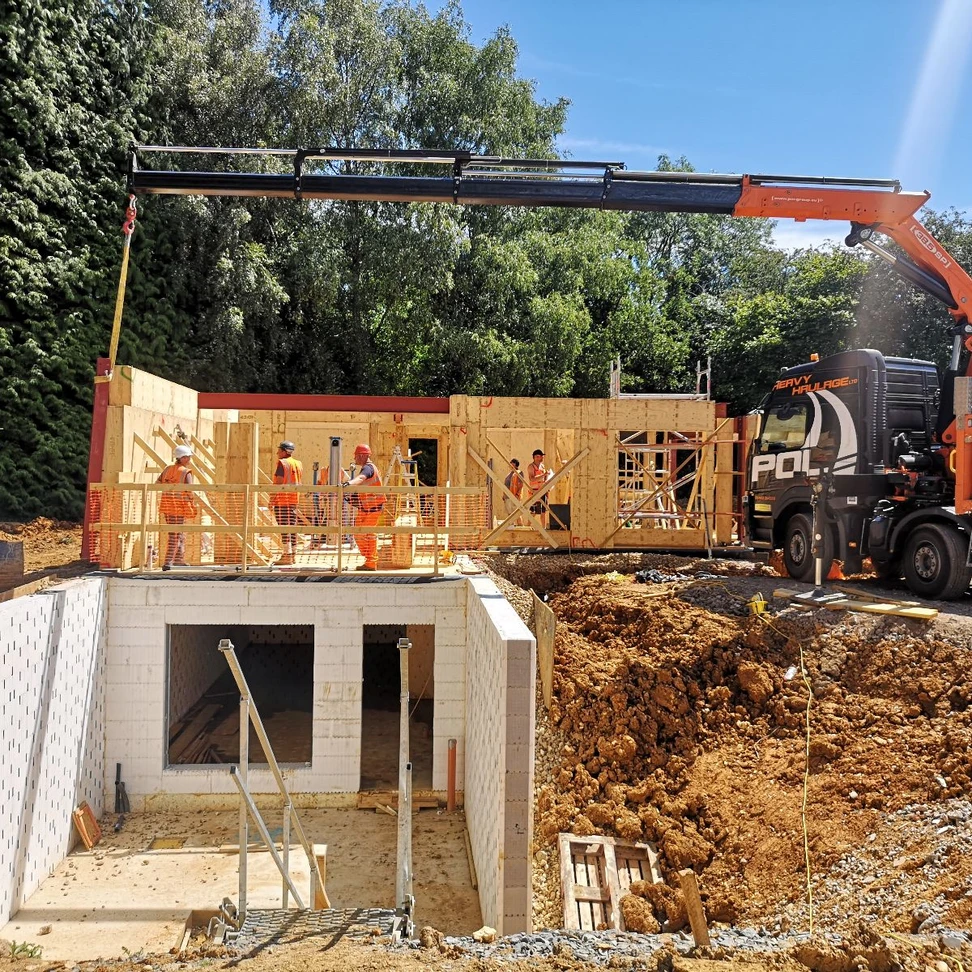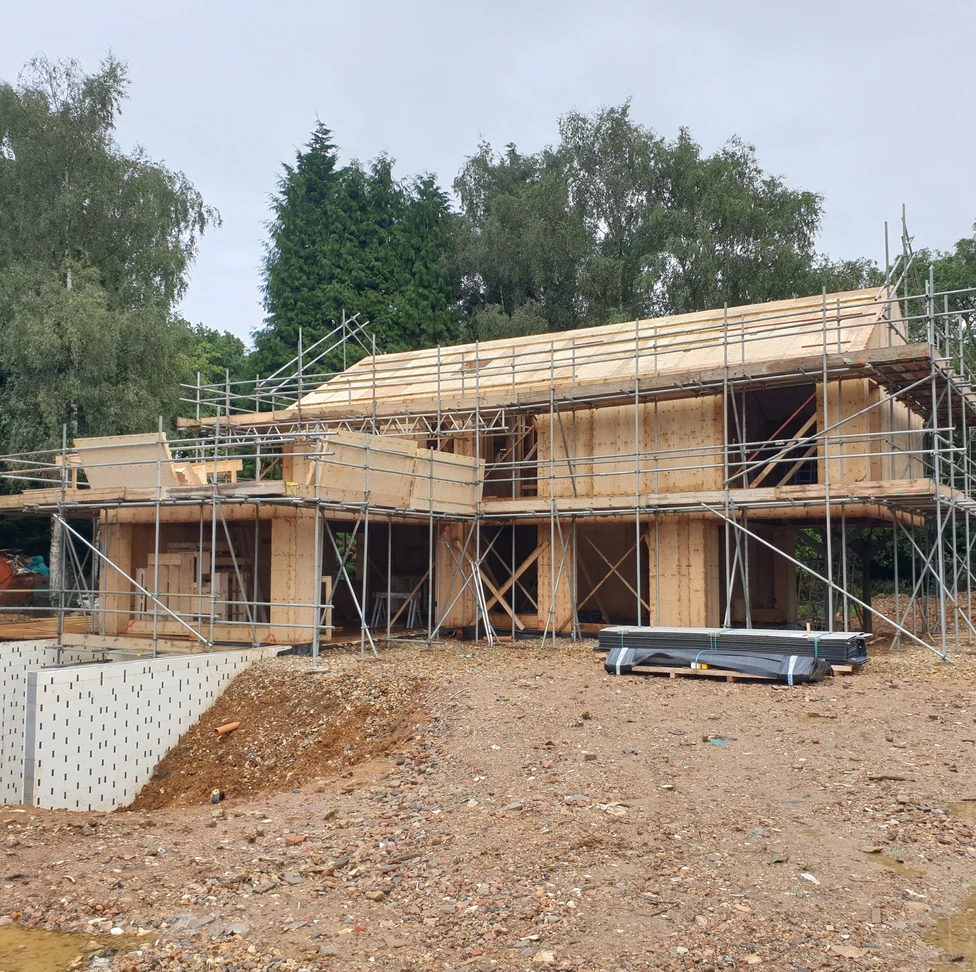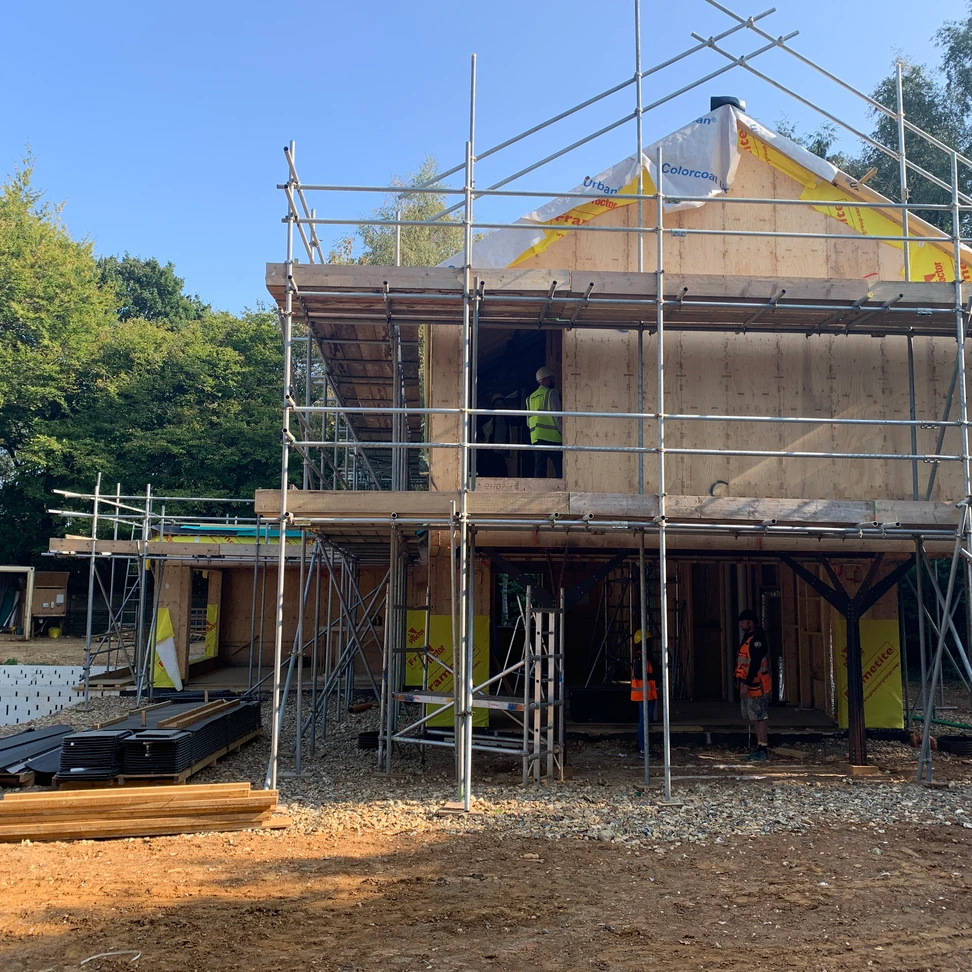What is an eco home?
- Anastasiia Korobkina

- Feb 24, 2025
- 5 min read
The latest UN climate change report confirms what we already know - that the climate emergency is real. So, if you’re planning to build your own home, there is an undeniable obligation to make it as energy efficient and as sustainable as you can.
As we move toward net-zero carbon emissions as a society, the changes will undoubtedly have an effect on energy prices. Building a low carbon home is therefore both sustainable and sensible. It will protect you from fluctuations in energy prices over the coming decades.

What makes a home ‘eco’?
An eco home has the lowest possible impact on the environment. Building homes that require less energy to run is one way we can effectively reduce carbon emissions for the future, as well as reducing running costs right now.
“This could mean that its construction process and materials limit the amount of carbon dioxide emissions produced, for example, or that the resulting house is designed to require minimal energy to run.” [Source: Homebuilding.]
In order to truly deserve the term ‘eco’, a new build must consider both the embodied energy used in construction as well as the operational performance of the finished home.
Embodied energy is the total sum of energy used to create something. It is the calculated environmental impact of every activity involved, including the carbon emissions produced from things like manufacturing and transport.
We’ve found that the simplest and most effective ways to achieve low embodied energy are using sustainable timber and low waste products, and efficient management of the project to reduce emission-intensive activities, such as deliveries.
6 ways in which we build eco homes:
Prioritise energy preservation: create a building envelope with excellent thermal performance that optimises the retention of heat in the home
Orientate the home to be south facing (where possible) and include large, triple glazed windows to warm it naturally using solar gain
Use natural and sustainable materials, e.g. timber
Minimise the use of large machinery
Reduce waste by choosing the right products, such as blown insulation
Add renewable/sustainable energy sources, such as solar panels or an air source heat pump
Homebuilding magazine has a helpful outline of what to expect from an eco home.
Minimising the environmental impact
Did you know that global CO2 emissions could be reduced by 31% if builders used wood instead of steel and concrete?
Minimising our environmental impact and carbon footprint is vitally important. Our pragmatic approach to incorporating environmentally friendly practices involves constantly evaluating products and processes in manufacturing and construction so we can #DecarboniseConstruction as much as possible.
1. Material choices can make a big difference.
The superstructure of each Facit Home is manufactured from FSC plywood. As wood stores carbon, the home itself becomes a carbon sink.
We use non-ferrous metals whenever possible. Zinc is one of these metals and is often used for the roof. Non-ferrous metals are recyclable and reusable.
We use as little concrete and steel as possible. For example, our super-insulated raft foundation has just a 100mm concrete slab, which works as the structure and thermal mass as well as containing the underfloor heating system. We get the most out of the concrete we do use.
Our products are chosen to reduce waste. For example, our blown insulation is easy to install and fills our timber components completely without needing to be cut to size out of large boards, which would create waste in offcuts.
2. We follow a fabric first approach and engineer each Facit Home to be highly airtight and insulated so that they are highly energy efficient to run. Airtightness and insulation ensure that very little (if any) heat is lost from the structure.
3. Renewable energy technology, such as solar panels or air source heat pumps, is incorporated whenever possible. It is always the customer’s choice, but balancing the environmental impact with the needs of the customer and the budget is integral to our approach.
Ensuring our construction projects are cost-effective as well as eco-friendly is important. With outstanding environmental performance as standard with a Facit Home, our customers can afford to build an eco home even if it’s not something they feel strongly about.
Embodied energy in construction
While it is difficult to measure the sustainability of a construction project, using natural, replenishable resources with low embodied energy is a great place to start.
A few years ago, we researched the environmental impact of construction. We calculated the embodied energy of our projects in comparison to traditional practices and created a conversion table to make sense of data that isn’t easily comparable.

More and more homes are being built to better standards of energy efficiency, but this also means that those buildings are likely to contribute more CO2 emissions in construction than in the energy usage of the following 50-100 years.
The next logical step is to consider and evaluate construction choices to reduce those emissions too. Comparing sustainable timber with other recyclable products shows how each choice can make a big difference to the carbon footprint.
“Concrete, steel, cement and glass are among the most frequently used construction materials. But they emit enormous amounts of carbon, making the building and construction sector responsible for 39% of all carbon emissions in the world. Wood does just the opposite: rather than emitting carbon, it stores it. Using wood for construction saves about 40% of carbon emissions in comparison to concrete and 30% in comparison to steel.” [Source: PEFC.]
But I should build a Passivhaus, right?
Building an eco home is a simpler and more cost-effective choice, even considering the years of slightly lower operational energy usage that would follow in a Passivhaus.
In a direct performance comparison, a Passivhaus will be more energy efficient than another eco home. They are the gold standard of energy efficiency, but the Passivhaus standards don’t cover or calculate the carbon emissions of construction, so housebuilders are free to use more materials with a higher carbon footprint, like concrete or polyurethane insulation.
The embodied energy of the project is likely to be higher and it can be more expensive to try to reach the stringent Passivhaus standards.
Comparing the carbon emissions created in construction of a Passivhaus with the slightly better performance over the years, we think that its better to keep construction emissions as low as possible in our projects.
To read more on the subject, visit the latest article in The Guardian - 'What will our eco-friendly homes of the future look like?'

High performance homes
Our environmental philosophy is about taking a holistic approach to sustainability, energy efficiency and renewable energy that allows us to create high performance homes with a low construction carbon footprint.
Combined with elegant contemporary designs and a complete turnkey service, we offer a perfect solution for creating your own eco home.
For more information about building a high performance home with us, contact Rhys at info@facit-homes.com or call the studio on 020 3034 0720.






